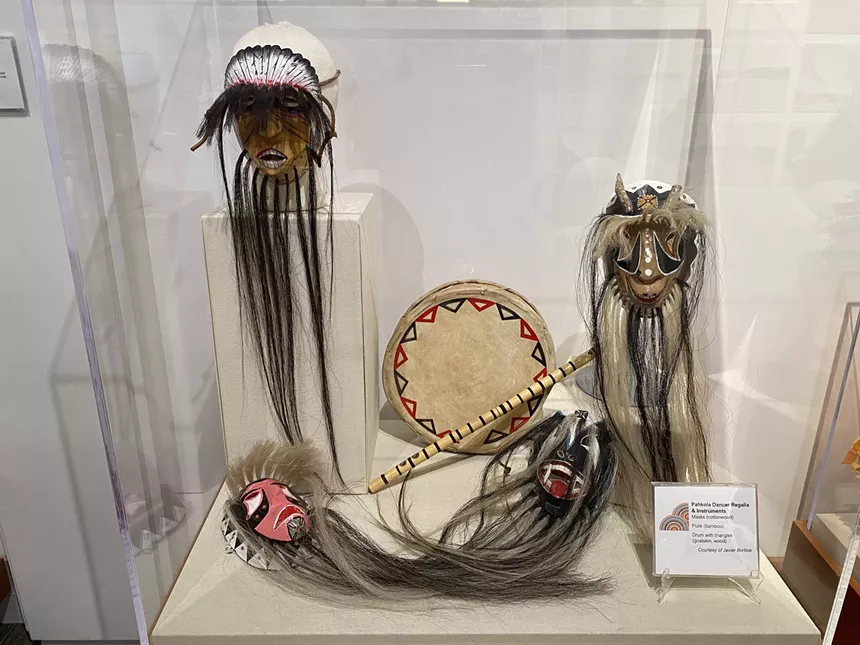A recent exhibit at the Tempe Museum of History offers an in-depth look at a small but fascinating area of the valley about which little is known: the city of Guadalupe.
“The story really revolves around the fact that a lot of people may not realize that the Guadalupe is a wonderfully rich, flexible and culturally diverse collection,” says Brenda Abney, director of the museum. “If they drive by, they might miss it completely.”
The exhibition, which opens November 19 and runs through July 29, is titled “Guadalupe: Where Three Cultures Flourish.” Among these original settlers were the Yaqui, as well as the Mexican people and the Anglo—including Catholic and Presbyterian missionaries—who arrived later.
The museum has worked closely with the Guadalupe Historical Society—which hopes to eventually open its own museum in the city—as well as the Pascua Yaqui tribe, the town of Guadalupe, and a panel of community members on the show.
Abney and the museum staff wanted to highlight Guadalupe to draw attention to the positive features of the city and the historical and cultural tapestry that makes it unique.
Abney explains, “In our permanent exhibitions and other exhibitions, there have been regional references to communities like Guadalupe, but we’ve never had one focused specifically on Guadalupe. In fact, I don’t think there has ever been an exhibition focused on the city of Guadalupe.”

Ramada welcomes visitors to the Exposition of Guadalupe at the Tempe Historical Museum.
Jerry Coppell
A full-size Ramada welcomes visitors as they enter the exhibit at the Tempe Historical Museum. Behind him, a series of home videos featuring the Guadalupanos (Inhabitants of Guadalupe) are shown.
The exhibit includes panels of historical and contemporary information about the city along with household and ceremonial items, all on loan from community members.
Everything from old photos to deer dancer logos and paraphernalia is on display. An AFL-CIO flag signed by Cesar Chavez highlights the city’s support for workers’ rights.
“This exhibition relied heavily on community contributions because we only had a few objects and a handful of images related to the city,” says Abney. “There is a lot about the Yaqui, in particular, as the founders of the city.”
Another item of the exhibition are 34 artworks by contemporary Guadalupanos in the Community Room Gallery. The art features themes in the Yaqui culture and in Guadalupe in particular, including the stunning Catholic Church downtown.
Guadalupe, with a population of over 5,000, is now the second largest community of Pascua Yaqui people in the United States; The largest is near Tucson. The Yaqui people of Sonora, Mexico were familiar with the area because of the trade routes, and many of them fled Mexico in the late 19th century after a failed uprising against then-President Porfirio Diaz. They settled in the present state of Arizona.
Many people are confused as to why Tempe is “situated” by Guadalupe to the north, east, and south (its western boundary is I-10). But the opposite is true: It existed before Arizona became statehood in 1912.
“Everything around us grew,” says Ismael C. Osuna, president of the Guadalupe Historical Society. “We are in the middle of a big city sticking to the old traditional ways. I am proud of my people because of that. It shows the resilience of our people.”
The community began on a plot of land that is now Guadalupe Cemetery, north of Baseline Road and west of Hardy Drive in Tempe, about a mile north of present-day Guadalupe. Part of what prompted the search, Abney notes, was that many Tempe Hispanics are buried there.
“Our people still use it to bury our loved ones there,” says Osuna, and to celebrate the Día de Muertos there. Others, he adds, are invited to celebrate the annual holiday, which honors the spirits of deceased relatives, as long as they are respectful.
Osuna explains that after some land disputes, a new 40-acre parcel of land was granted to the residents by the federal government in 1914, and his people settled where they are now. Despite the community’s deep roots here, it was not incorporated until 1975.
“My grandfather was 93,” Osuna says, “and he had seen Guadalupe from its humble beginnings, from a few houses here and there and from desert lands. I loved sitting with him, and he would tell me all these stories about his time as a kid.” [and] The changes he saw.” His grandfather passed away in 2020.

Pahkola Dancer regalia and instruments—masks, flutes, and drums—are among the many ceremonial objects loaned by the Guadalupe community for exhibition at the Tempe Museum of History.
Jerry Coppell
At the exhibition’s ribbon-cutting ceremony in November 2022, Osuna says, he was happy to see how many people in the community turned up and were excited about it.
“Getting so much positive feedback was one of the highlights of working on this project and making it all worth it,” he says. “The positive vibes and those smiles – that’s something I will always carry with me.”
Osuna added, “I was happy to see that we were able to shine a different light on the community. Everyone here in Guadalupe is very proud to be from Guadalupe. Proud to hold on to their culture, their traditions and their language.”
Guadalupe: Where Three Cultures Flourish. through July 29. From 10 am to 5 pm from Tuesday to Saturday. Tempe Historical Museum, 809 East Southern Avenue, Tempe. Submission is free. Visit tempe.gov.

